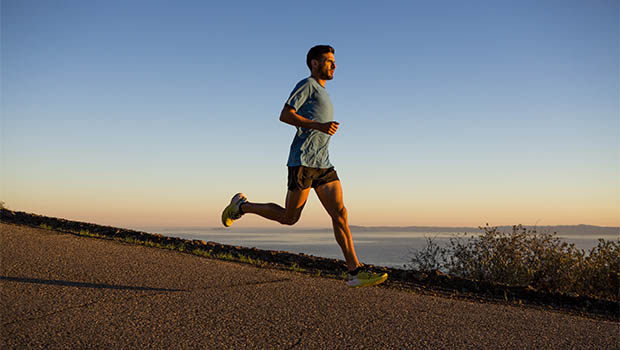
The word "maximal" is thrown around a lot when talking about the super cushioned, slightly bulky-looking shoes you see on the shelf at your local running store. But what does it really mean to run in maximalist shoes, and is it right for everyone?
ACTIVE.com spoke with the co-founder of HOKA ONE ONE, Jean-Luc Diard, and asked him to explain the concept of maximalist running shoes. And with HOKA being arguably the biggest name in maximal running, it's fair to say Diard knows a thing or two about the topic.
Defining Maximalist Running
A popular misconception is that maximalist running shoes simply have a ridiculous amount of cushioning in the sole for an ultra plush gait. But while maximalist shoes do include a large amount of cushioning to soften the impact of each footstrike, the technology goes much deeper.
In fact, Diard prefers the term "adapted protection" in place of "maximalist."
HOKA shoes, for example, are made up of four main components that support and cushion the entire foot using advanced technology:
- A higher profile for protection
- Higher sidewalls for stability
- Low drop stance to promote a midfoot strike
- Meta-rocker technology for an efficient toe-off
And while runners looking for the most natural running experience may assume that a maximal shoe style would result in a gait change, Diard says it actually returns your foot to its most natural position. The result? Faster, more efficient running with less energy output.
Is Maximalist Running for Everyone?
If it were up to Diard, every runner would have at least one pair of maximalist shoes in their collection. Created with ultrarunners in mind to address the "problem" of running extremely long distances—and already wildly popular among triathletes—the shoes have also found a home with shorter distance crowds.
After all, a technology that lessens the impact of each step can help runners of all levels, from newbies to pros and 5Kers to 50Kers. As fatigue sets in, form breaks down and often results in pronation. A maximalist shoe, then, can decrease the energy needed to perform—allowing you to maintain focus on solid running form to avoid injury.
In other words, because no runner is exempt from the benefits of a more efficient stride, the ideal audience for a maximal shoe is—well, everyone.


